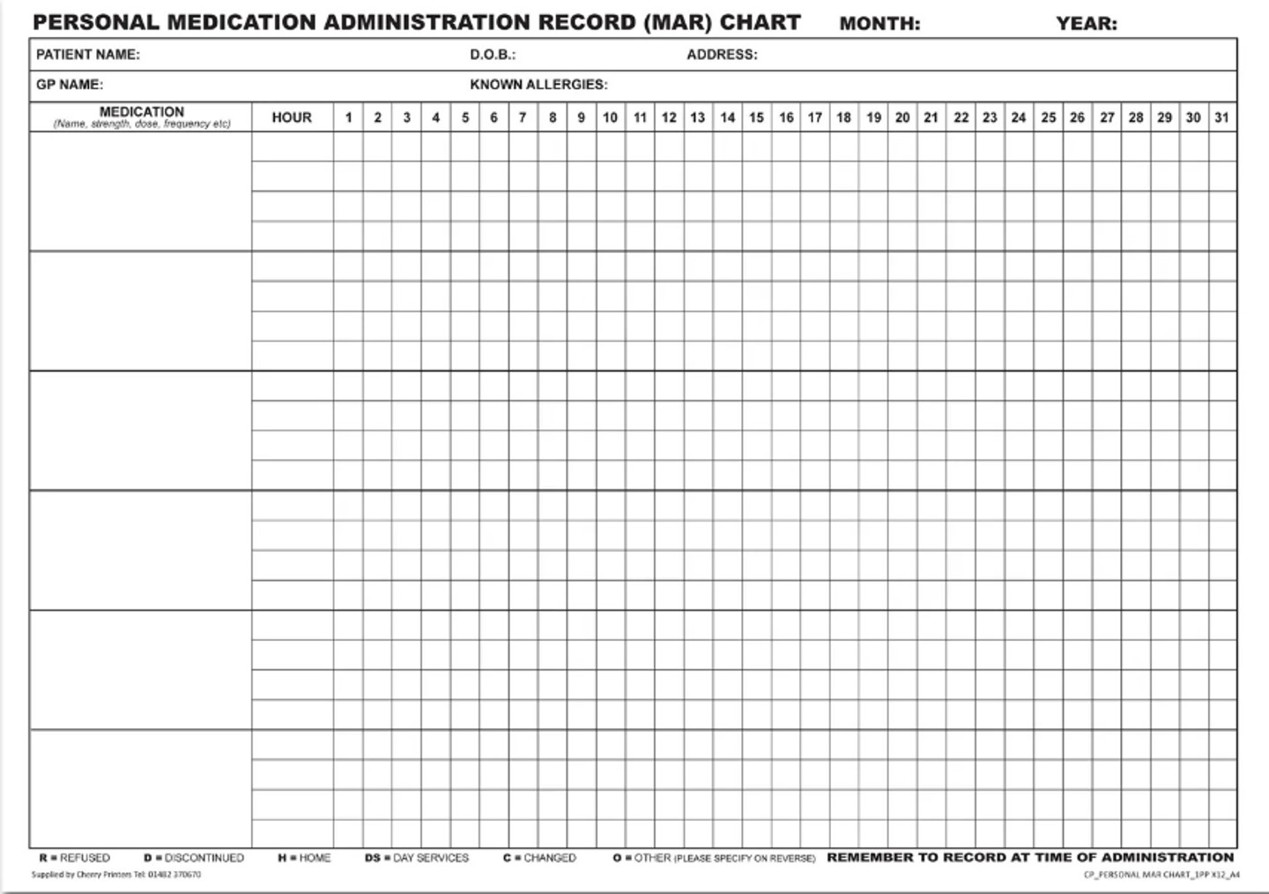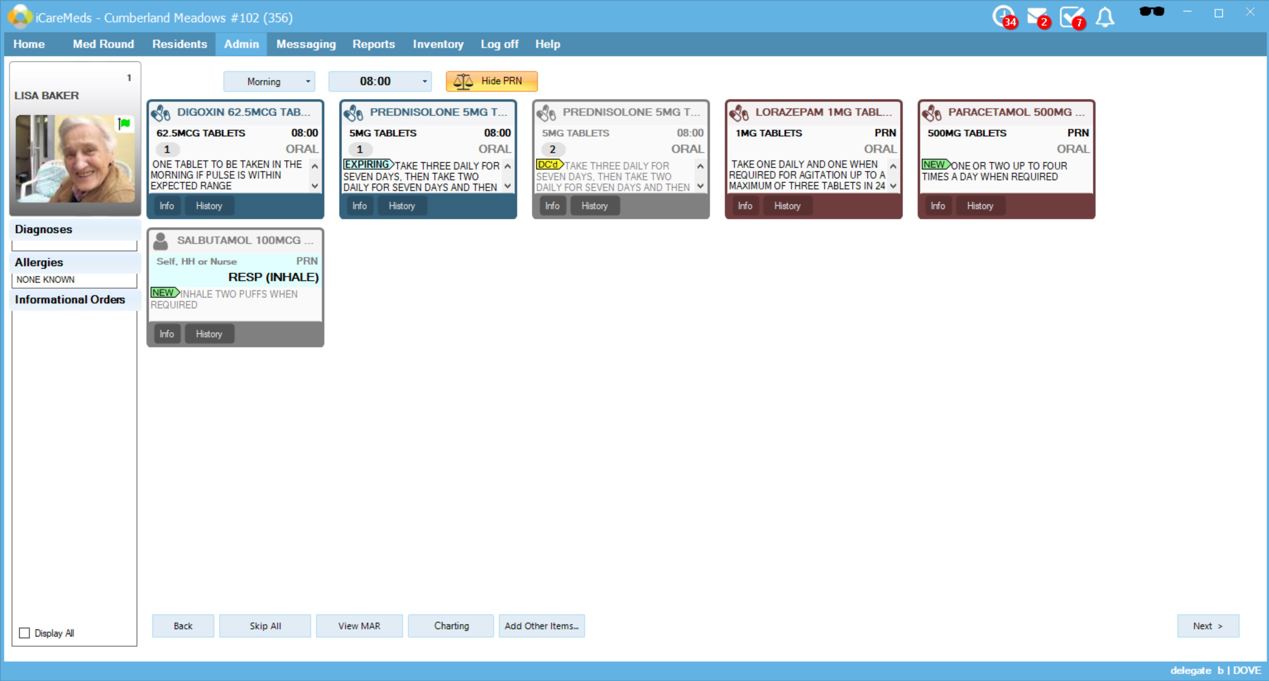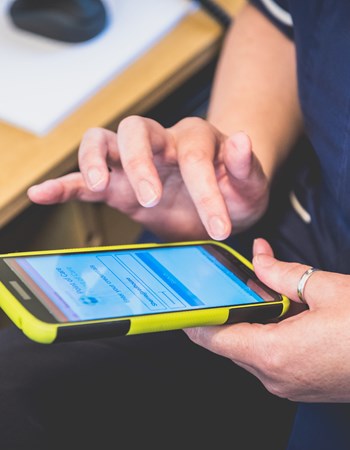- Nursing Homes
- Community Care
-
- Care Local Authorities
- Local Authority
- Digital Telecare
- Case management
-
- Resources
- Case studies and testimonials
- Webinars

Paper MAR vs. eMAR vs. EMM - What's Best for Your Care Home?
Are you a manager of a care home or nursing home whose goal is to improve the recording of medication administration, reduce risk and improve safety?
You may not be aware of the three main methods of doing so, or if you are, you probably want to learn more about them so you can make the right decision about what is best for you.
At The Access Group we’ve worked with thousands of residential care providers, to help them select the right medication management options for them. We supply complete care management systems, including electronic medication administration records and complete electronic medication management systems.
In this article, we’re going to apply all that knowledge to equip you with the best guidance we can on the different methods of recording medicine administration. After reading it you should know exactly what the best option is for you to use in your care service.
 10
10

Written by James Taylor
What is a MAR (Medication administration records) chart?
Medication administration records (MARS) are documents, usually in the form of a chart or table, that are used to record the medication given to and taken by an individual and will become part of their permanent care/medical record. Some of the information found in MAR documents include:
- A column listing the names of prescribed medication
- The time and date the medication has been taken
- The initials of the employee assisting with the medication
- A start date and an end date if known
- Information that allows staff to identify an individual e.g. date of birth, allergies, diagnoses, etc.
MARs are an essential legal requirement in care and nursing homes, especially those that have multiple members of staff and many residents. As well as keeping things organised and saving time, MARs will reduce the risk of medical errors in the facility, protecting both the residents and the caregivers. However, due to improvements in technology, there is a variety of MARs. available, including:
- Paper MARs
- Electronic MARs (eMAR)
- Electronic medication management (EMM)
Each method comes with its pros and cons and some will work better for some than others. We will take a look at this information in closer detail, to help you make an informed decision. For more background reading, the CQC has covered the importance of good record keeping and medicines administration records in adult social care.
What is Paper MAR?
Paper MAR is pretty self-explanatory - it’s the use of paper to record medical information. This includes writing down everything from the dosage and the time and date of the last dose, to the medical information of each resident and medication stock. It’s an older way of doing things and can easily get complicated, reducing efficiency and increasing the risk of medication errors.
Pros of Paper MAR
Unfortunately, there aren’t many pros to using paper MARs in this day and age. However, traditional paper-based systems are easy to teach and pick up by new members of staff. Having the physical information and records on hand can be beneficial when something needs to be copied and handed over to family or medical professionals. The care team also doesn’t have to worry about system crashes or maintenance.
Cons of Paper MAR
MAR charts have a lot of useful information but it’s static. It won’t notify you if medication is late or if it’s running low. It doesn’t tell you what you need to write down and it won’t pick up human errors. It can also be difficult to get information off a MAR chart, especially if you need to get it quickly. For example, you’ll need to count pills and signatures to find out how long someone has been on medicine.
Another problem caregivers have to worry about is messy handwriting that’s difficult to read. This can lead to avoidable mistakes.
Aside from messy handwriting, sometimes staff may forget to record information entirely, or partially, leaving gaps in the MAR chart. This can cause enormous confusion during audits, but more importantly for the next person/s administering medicines. It runs the risk of them mistakenly re-administering the medicine that has not been recorded, which means a person can overdose.
If during auditing you spot one of these gaps in a MAR chart it can spark a big effort to establish why and what happened.
Now imagine if your regulator, an inspector, spots that gap instead. The consequences for you and your care service could be severe. Regulators do not mess around when it comes to medicine-related risks.
In addition, paper-based systems aren’t always cost-effective as the care home will need to order paper often and the waste isn’t good for the environment. Finally, calculating medicine stock levels is a time-consuming task in itself and as it’s hard to get the information you need from paper, this makes it worse.

What is EMM?
Electronic medication management (EMM) systems include eMAR but have a range of other functionality to manage medicines and all medicine processes in care homes and nursing homes.
In short EMM manages the end to end process, from accounting for medicines in the home, administering those medicines correctly and safely, recording that administration, controlling stock levels and recording through an interface with pharmacies, analysis of trends and auditing.
EMM systems can be used independently, but as with eMAR systems they usually integrate with a care planning system to give a holistic, joined up view of each residents’ care.
EMM systems can usually be accessed on web browsers and mobile apps. They will usually include barcode scanning technology, for care homes using original pack dispensing.
EMM systems typically include a range of process automation, alerts and reporting to help make each step of the medication management process in your care home, more efficient, safer and more robust.
Pros of EMM
EMM has all the benefits of eMAR and then some. It reduces errors by solving the issues you would face with paper MAR, but then goes a step further.
For example, a proper EMM system will alert a carer if they are trying to give a resident a medicine too soon after they were last given a medicine (safe tolerance).
An EMM system will automatically record what your stock levels of each medicine are, how many you need based on residents’ requirements and automatically add this to the next order from your pharmacy.
That brings us onto the direct pharmacy interface. Sharing information directly with your pharmacist’s system eliminates many of those information and communication breakdowns between care home or nursing home and pharmacy that can cause errors or delays.
EMM collects a much richer set of data than a simple eMAR system. Many EMM systems have inbuilt reporting and analytics modules that use that data to give you meaningful insights. You can use these to spot where medicines may be impacting quality of life, or falls for example. You can identify where medicine errors are greatest and start to understand why.
The ability to develop these insights into a clearer picture becomes even easier when the EMM system is deeply integrated with your care planning system too.
EMM supports robust, transparent and reliable medicine processes. This not only benefits residents, staff, your service as a whole and organizations you work with, it will also impress regulators and inspectors, showing them you have the best systems in place to ensure safety for people.

Cons of EMM
EMM is a more complicated, extensive system than a simple eMAR system or of course paper records. That means it will probably be more expensive than the eMAR options available. It will also take longer to implement.
Because EMM will improve all of the processes you have to manage medicines, it will also change them. This means you will have to manage that change. Initially day-to-day activities may take more time to complete, as your service and your staff become used to the new way of working and the systems ‘bed in’.
EMM systems work best, much better in fact, when integrated with a care planning system, this means additional considerations about which overall care planning and medication management software to select, as not all systems integrate with each other.
As with eMAR existing staff and new staff will need to be properly trained to use the system effectively.
Like eMAR, if the system becomes disrupted or requires maintenance, care homes that rely on the software may struggle without their electronic records. Long-term employees may struggle to adapt to the new way of managing medicines and will require continuous support and motivation. The integration requires time and money. Costs will increase for outdated homes that need new technology.
The Best Choice for Your Care Home
There’s a clear winner if we’re looking at a straightforward comparison of which system is the best for your care home to manage the administration of medicines.
That winner is an EMM (electronic medication management) system. It has eMAR (electronic medication administration records) built in, so it has all the strong points that eMAR does over paper MAR.
But as we’ve discussed EMM goes much further, it’s a complete, end to end medicine management system specifically for care homes and nursing homes, for residential care. It is simply better.
However as we’ve also discussed, implementing an EMM system requires you to commit to it, to plan for it, to have the necessary time and money available to do so.
An eMAR system on the other hand is simpler to implement. It may already be available as part of your existing electronic care plan system, if you’re using one. It will definitely be better than paper MAR, helping you to reduce admin and increase safety.
A simple eMAR system may prove to be just a stop gap before getting a proper EMM system. But that stop gap might end up being your best choice right now, implementing EMM might not be feasible and eMAR could be a useful stepping stone.
It really is a question of can you choose EMM? Are you ready and do you have the means? That will depend on a wide range of factors, including everything from budget, to existing systems, personnel, your pharmacy and other projects you may already be focused on.
Given our experience of implementing EMM systems in care homes and nursing homes of all shapes and sizes we can help assess the situation with you and advise as much as possible.
We’re happy to help you determine the best way forward, even if you decide your path doesn’t include one of our systems, so contact us today and let’s see what is going to work best for your care home.






